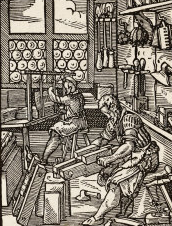Tranchées et enclaves : surgissements et sutures dans Non-Combatants and Others (1916) de Rose Macaulay.
Abstract
Le roman de Rose Macaulay Non-Combatants and Others fut publié en 1916, en pleine Première Guerre mondiale. La guerre de tranchées, qui est alors à son paroxysme, imprime sa marque traumatique, surgissant sous forme de visions dont le personnage principal féminin, Alix, subit les intrusions dans un monde qu’elle cherche à tout prix à préserver. Ces apparitions mettent en péril la fluidité narrative, elles dessinent une dynamique de résurgence monstrueuse le long d’une ligne de tranchée symbolique qui s’inscrit en creux dans la matière du roman. Dans cet article, je propose d’étudier les modalités selon lesquelles cette ligne de fracture informe la narration, à la fois mise en éclat de l’écriture et source de son jaillissement.
Rose Macaulay’s novel Non-Combatants and Others was published in 1916, in the middle of the First World War. The war of the trenches, which has then reached its paroxysm, puts its traumatic stamp on the pages, springing up in the text as visions that Alix, the female central character, experiences as intrusions in a world she desperately tries to protect. These apparitions jeopardize the narrative fluidity. They fashion a dynamic movement of terrifying resurgence all along a symbolic trench line deeply engraved in the material of the novel. In this paper, I offer to study the way that fault line shapes the narrative, both shattering and prompting its writing.
Published
Issue
Section
License
- Work submitted for publication must be original, previously unpublished, and not under consideration for publication elsewhere. If previously published figures, tables, or parts of text are to be included, the copyright-holder's permission must have been obtained prior to submission.
- Authors of accepted manuscripts will assign to L'Atelier the right to electronically distribute their article, or publish it in any form (Internet, CD ROM, printed copy) but authors will retain copyright and, after the article has appeared in L'Atelier, authors may republish their text (in print and/or electronic form) as long as they clearly acknowledge L'Atelier as the original publisher.


